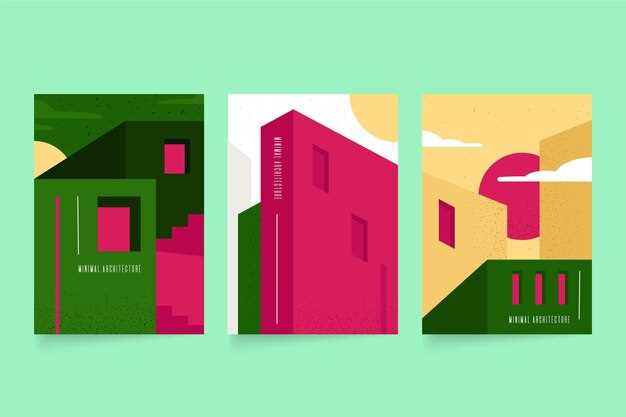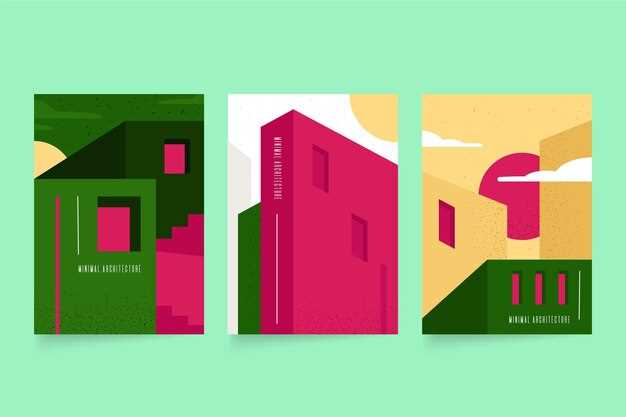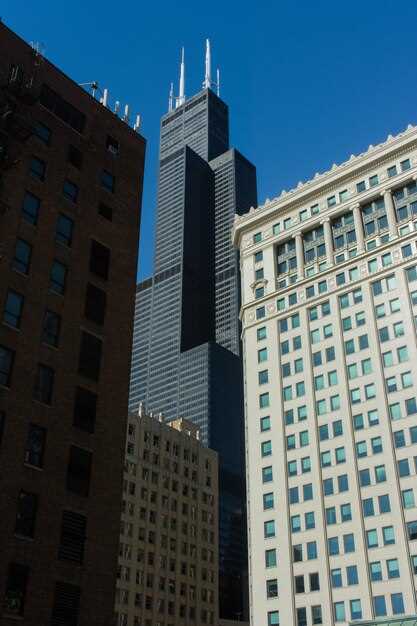America’s Favorite Architecture Styles in 2025
May 14, 2025

If you’re considering a home renovation or planning to build, consider embracing the elegance and charm that Mid-Century Modern architecture offers. This style, notable for its clean lines, large windows, and integration with nature, continues to captivate Americans in 2025. Its popularity is fueled by a desire for open floor plans and spaces that promote natural light.
Minimalism is on the rise, but not as we knew it. Today’s version is augmented by smart technology that enhances sustainability without compromising on aesthetics. Stainless steel appliances, energy-efficient systems, and programmable features coalesce seamlessly into the clean, uncluttered lines of Minimalist homes.
The resurgence of Craftsman-style homes is undeniable. Homeowners appreciate their attention to detail, handcrafted woodwork, and built-in furniture. The style’s adaptability to modern amenities while maintaining its distinct historical character makes it a preferred choice. Expect porches with thick columns and exposed rafters to be common sights in neighborhoods.
Industrial chic also makes a bold statement in 2025. Exposed concrete, vintage finishes, and metal accents provide a rugged yet refined look that appeals to urban dwellers. This style effectively uses recycled materials, meeting the growing demand for eco-friendly construction that doesn’t skimp on style.
No list would be complete without mentioning the enduring appeal of Victorian architecture. Homeowners are investing in restoring these properties to their former glory, integrating modern conveniences while preserving intricate details like decorative trim and stained glass windows. This delicate balance of old and new captures the imagination of a generation eager to respect the past while living in the present.
Emerging Trends in American Architecture

Focus on integrating sustainable materials into building designs. Using bamboo, reclaimed wood, and recycled steel not only enhances aesthetics but also reduces environmental impact. This trend gains traction as architects prioritize eco-friendliness without compromising style.
- Smart Homes and Automation: Adopt advanced technologies to create homes that offer convenience and efficiency. Implement smart lighting systems, automated climate control, and voice-activated devices to enhance living experiences.
- Biophilic Design: Incorporate natural elements into architectural spaces. This trend improves mental well-being and productivity by featuring green walls, indoor gardens, and large windows that allow ample natural light.
- Flexible and Adaptable Spaces: Design areas that easily transform to accommodate different functions. Movable walls and modular furniture offer the flexibility needed to adapt to various activities and demands within the same floorplan.
- Urban Retrofits: Revitalize existing urban structures to breathe new life into aging buildings. Utilize modern techniques and materials to improve energy efficiency and align with contemporary aesthetics while preserving historical significance.
- Mixed-Use Developments: Combine residential, commercial, and recreational spaces to create self-sufficient communities. This approach promotes walkability and reduces the need for long commutes, encouraging sustainable urban growth.
These trends highlight a shift towards resourcefulness and user-centric designs, setting the stage for a forward-thinking architectural landscape in America. By prioritizing these elements, architects not only fulfill immediate needs but also contribute to a sustainable future.
Innovative Use of Sustainable Materials
Employ materials like bamboo and recycled steel to structure your building in an eco-friendly manner. Bamboo grows rapidly, reaching maturity in just 3-5 years, making it a renewable choice. Its tensile strength rivals that of steel, making it ideal for both structural and aesthetic applications.
- Bamboo: Use bamboo for flooring and wall panels. Harvested sustainably, it offers durability and a warm aesthetic, reducing reliance on hardwoods.
- Recycled Steel: Opt for recycled steel in frames and beams. It minimizes the carbon footprint compared to traditional steel production, using 75% less energy.
- Cork: Implement cork for insulation. Extracted from bark without harming trees, it provides excellent thermal insulation while being hypoallergenic and antimicrobial.
- Reclaimed Wood: Utilize reclaimed wood for a rustic charm. Recycled from older structures, it adds character and reduces demand for new lumber.
- Low-VOC Paint: Choose paints with low volatile organic compounds to enhance indoor air quality, making your living space healthier.
Integrate solar panels with high-efficiency glazing to harness energy without compromising natural light. Smart glass technology allows adjustment for sunlight and privacy, enhancing comfort and reducing heating and cooling needs by up to 30%.
Incorporate rainwater harvesting systems to cut down water usage in landscaping. This innovation not only conserves water but also slashes utility bills, making it a practical choice. Explore these materials and approaches today to create structures that contribute positively to the environment and express modern architectural aesthetics effortlessly.
Integration of Smart Home Technology
Choose smart lighting systems to enhance convenience and energy efficiency. Opt for customized lighting schedules that match your daily routines, reducing energy waste while increasing comfort. With the integration of motion sensors, rooms light up automatically as you enter, ensuring safety and freeing you from manual operation.
Integrate smart thermostats to maintain optimal temperature levels effortlessly. These devices learn your preferences over time and make automatic adjustments, promoting energy savings and comfort. Utilize geofencing technology to adjust settings based on your location, so your home always welcomes you with the perfect climate.
Implement smart security features for enhanced safety. Equip your home with smart cameras and doorbells that allow real-time monitoring and two-way communication. Set up alert systems to notify you of any unusual activity, providing peace of mind whether you are at home or miles away.
Embrace smart kitchen appliances to streamline meal preparation. Use smart ovens and refrigerators that offer recipe suggestions based on available ingredients. Manage your grocery list effortlessly as devices track inventory and notify you when supplies run low, all through your smartphone.
Consider smart home hubs to unify and control all connected devices effortlessly. These hubs serve as the central brain, allowing voice commands and remote access through mobile apps, ensuring a seamless and integrated smart home experience.
When installing smart technology, prioritize reliable internet connectivity, as it is the backbone of a modern smart home system. Consider investing in a high-quality, secure Wi-Fi network to support smooth performance for all connected devices. Security is paramount; ensure regular updates and use robust passwords to protect your integrated technology ecosystem.
Revitalization of Classic Styles
Explore the potential of blending classic architectural elements like Greek Revival columns or Victorian bay windows into modern design for an enduring appeal. Select premium materials such as marble or solid hardwood to enhance authenticity and longevity. Integrate contemporary energy-efficient windows and smart home technology to bring these traditional styles into the future without compromising their timeless elegance. Consider working with architects specializing in historical preservation to ensure the integrity of the original style while introducing modern comforts. Personalized touches, such as custom millwork or bespoke lighting fixtures, can further elevate the character and charm of classic architecture. Align color palettes with period-accurate tones or apply modern neutrals for a fresh yet historically resonant look. Finally, landscaping with native flora can complement and enhance the architectural aesthetics, creating a cohesive and harmonious environment.
Urban vs. Suburban Architectural Preferences
Focus on maximizing natural light and incorporating sustainable materials when designing urban spaces. Many city dwellers prefer high-rise buildings with glass facades that offer expansive city views. Roof gardens and green walls are no longer optional; they are integrated into the very fabric of the building to promote environmental friendliness.
In contrast, suburban architecture leans towards spaciousness and tranquility. Single-family homes with large backyards, open floor plans, and a blend of traditional and modern styles are preferred. Consider materials like brick and stone, which add a timeless appeal, as well as energy-efficient systems, which have become a priority for homeowners wanting to reduce their carbon footprint.
Both environments are turning towards smart home technologies, yet their applications vary. Urban settings prioritize security systems and smart appliances for convenience, while suburban homes benefit from advanced irrigation systems and solar energy solutions to support expansive properties.
Balcony and patio spaces in urban areas are becoming personal oases, while in the suburbs, outdoor living spaces such as kitchens and entertainment areas are in demand. Embrace versatility by designing adaptable spaces in urban locales, allowing for multipurpose use in limited square footage.
In summary, understanding resident lifestyles allows architects to tailor designs that fit urban density and suburban expanse. Matching form with function, while considering cultural and environmental aspects, ensures that architectural choices are aligned with resident preferences.
Influence of Global Architectural Movements
Celebrate architectural diversity by incorporating international styles into America’s favorite architecture designs. Enhance spaces by blending Scandinavian minimalism, characterized by clean lines and functional elements, with traditional American styles to create clarity and openness.
Modernize classic designs with Japanese wabi-sabi, which embraces imperfection and natural materials. This integration promotes authenticity and warmth, offering a refreshing contrast to conventional perfection.
Look to sustainable architecture movements gaining traction in Europe that focus on energy efficiency and environmentally friendly materials. Implement these methods to improve sustainability in American designs without sacrificing aesthetics.
Adapt the vibrant color palettes of Moroccan and Mediterranean styles to interior and landscape design. This adds boldness and captures an inviting atmosphere, breaking away from neutral tones. Integrate these colors into smaller elements like tiles, textiles, and furnishings for a balanced yet striking effect.
Draw inspiration from the intricate details of Islamic architecture, utilizing ornate patterns and geometric designs to add richness to facades and interiors. This harmonizes with existing styles while providing visual depth.
Employing these global architectural influences not only diversifies design but also creates a unique narrative that resonates culturally and emotionally with modern American homeowners looking for depth and variety.
The Modern Farmhouse Trend in 2025

Opt for natural materials and a neutral palette to capture the essence of the modern farmhouse. Use reclaimed wood for beams or flooring, and mix with contemporary metal finishes to create a compelling contrast. Prioritize energy efficiency by incorporating solar panels and high-performance windows, an important aspect of the 2025 sustainable architecture movement.
Integrate open-concept layouts with large, inviting kitchens that serve as the heart of the home. Install farmhouse sinks and wide plank floors for authenticity. Custom built-ins and shiplap walls add charm and functionality, amplifying storage without clutter.
Leverage technology by integrating smart home features discreetly. This includes programmable lighting and HVAC systems, which are now essential for modern convenience. Landscaped gardens with native plants offer a sustainable yet aesthetic outdoor space, perfectly marrying the traditional with the contemporary.
Finally, personalize the space with vintage finds and heirloom pieces to add character, ensuring that each home tells a unique story. By blending traditional elements with innovative design and technology, the modern farmhouse trend remains both timeless and forward-looking in 2025.
Key Characteristics of Modern Farmhouse Design
Embrace the charm of modern farmhouse design by focusing on simplicity and utility. Start with a neutral color palette; whites, grays, and muted earth tones provide the perfect backdrop for this aesthetic. Naturally aged wood surfaces add warmth and character, so incorporate reclaimed wood beams, distressed flooring, and shiplap walls.
Integrate open floor plans to create a sense of airiness and connectedness between living spaces. Large windows and sliding glass doors are crucial, enhancing the flow of natural light while blending indoor and outdoor spaces.
Mixing antique and modern elements is essential to achieve a balanced look. Consider vintage light fixtures alongside sleek metal or industrial-style accents to add a touch of elegance and contrast.
Furniture should prioritize comfort and function, featuring plush fabrics like linen and cotton in sofas and cushions. Farmhouse sinks and exposed shelving in kitchens serve as focal points while offering practicality. Don’t shy away from statement pieces such as barn doors or hand-crafted décor to personalize your space.
Finally, focus on landscaping that complements the design’s rustic roots. A cozy outdoor area with a wooden deck, native plants, and a fire pit can extend your farmhouse ambiance beyond the walls of your home, creating a serene and inviting environment.
Incorporating Vintage Elements
Start with unique, salvaged architectural pieces like reclaimed wood beams or classic light fixtures to create an authentic vintage feel in your home. Turn to local antique shops or online marketplaces for distinctive finds that add character and history to any space.
Focus on one-of-a-kind pieces that tell a story. Vintage doors, windows, and moldings can enhance modern designs by providing visual contrast. Consider integrating clawfoot tubs, cast iron sinks, or retro appliances to maintain a cohesive theme throughout your home.
For those aiming to incorporate vintage furniture, reupholstering old sofas or chairs with modern fabrics can offer a fresh twist while preserving the piece’s integrity. Pair these with period-appropriate accessories such as mid-century modern clocks or Victorian-style mirrors to maintain consistency.
Use a balanced color palette to seamlessly connect new elements with vintage pieces. Earthy tones work well with wood and metal, whereas bold colors can complement retro furniture. Integrating vintage elements requires thoughtful selection and consideration of space, so plan placements strategically to avoid clutter.
| Vintage Element | Integration Tip |
|---|---|
| Reclaimed Wood Beams | Use as ceiling features or wall accents |
| Classic Light Fixtures | Combine with dimmable lights for atmosphere |
| Clawfoot Tub | Install with modern plumbing for functionality |
| Mid-century Furniture | Pair with contemporary fabrics |
| Victorian Mirrors | Position to enhance room depth |
Color Palettes and Material Choices
Choose earthy tones and natural materials to create a harmonious blend between architecture and the environment. Opt for shades like sage green, terra cotta, and warm beige that reflect nature’s palette. These hues not only enhance the architectural design but also evoke a sense of tranquility and connection with the surroundings.
For materials, prioritize sustainable options such as bamboo, recycled wood, and reclaimed metal. These choices not only reduce the environmental impact but also contribute to an aesthetically pleasing and modern look. Additionally, incorporating locally sourced stone can add a unique regional character to your design, providing durability and timeless appeal.
Incorporate biophilic design elements to strengthen the connection with nature; large windows and skylights maximize natural light, while living walls and vertical gardens introduce lush greenery into urban settings. These features not only promote well-being but also improve air quality and energy efficiency.
Embrace a minimalist approach by reducing extraneous details and focusing on clean lines and open spaces. This approach allows the natural beauty of the materials and colors to shine, creating an inviting and serene atmosphere. Adding subtle texture through exposed brick or raw concrete can offer visual interest without overwhelming the overall design.
Q&A:

What are the key architectural styles gaining popularity in America by 2025?
In 2025, some of the popular architectural styles in America include Modern Farmhouse, which combines traditional farmhouse aesthetics with contemporary features; Mid-Century Modern, known for its clean lines and integration with nature; and Sustainable Architecture, focusing on eco-friendly materials and energy efficiency. These styles reflect a blend of nostalgia and innovation, catering to contemporary tastes while addressing environmental concerns.
How does sustainable architecture influence the design of modern homes?
Sustainable architecture significantly impacts modern home design by prioritizing renewable and environmentally friendly materials, energy-efficient systems, and minimizing waste. This includes implementing solar panels, green roofs, and using recycled or locally sourced materials, which not only reduce environmental impact but also lower long-term costs for homeowners. Such designs are becoming increasingly important as awareness of environmental issues grows.
Why is the Modern Farmhouse design style so appealing in 2025?
The Modern Farmhouse style appeals in 2025 due to its blend of rustic charm and contemporary comfort. This style features open floor plans, neutral color palettes, and a mix of old and new materials, such as reclaimed wood and sleek metals. It resonates with those seeking a cozy yet stylish living space that maintains a connection to the countryside, satisfying a desire for simplicity and tradition in an increasingly digital world.
What factors are driving the resurgence of the Mid-Century Modern style?
The resurgence of the Mid-Century Modern style is driven by its timeless appeal and versatility. This style features simple forms, functional spaces, and an emphasis on bringing the outdoors inside through large windows and open layouts. It’s particularly attractive to younger generations seeking minimalist yet functional home environments that foster a seamless transition between indoor and outdoor living. Additionally, its sleek aesthetic and historical significance offer a sense of nostalgia paired with modern enhancements.